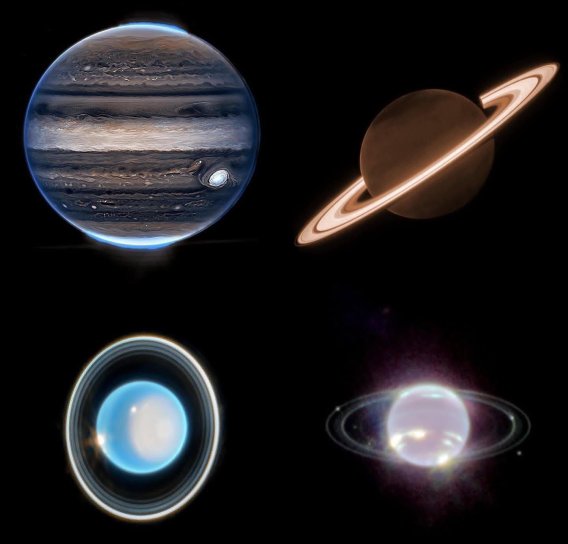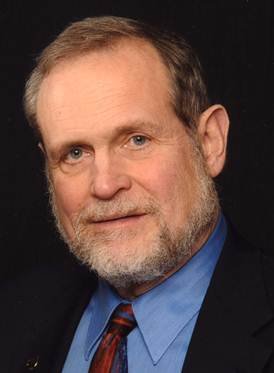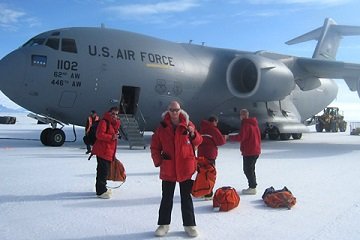
MIfA Public Lecture Series
The Minnesota Institute for Astrophysics is dedicated to bringing the excitement of modern astrophysical research to the Minnesota public.
Throughout the year, we host numerous programs including our Universe in the Park series and Friday night public viewing sessions with our on-campus telescope.
The MIfA public lecture series, held once per semester, is our way to communicate the exciting research activities of MIfA researchers directly to the public.
Upcoming Lecture

April 17 2024
18:00 onwards
Coffman Theater
A life in the day of outer solar-system exploration
Past Lectures
March 2022

Comets: The Rosetta Stone of the Solar System
Robert Gehrz
Just as the Rosetta Stone was the key to cracking the ancient Egyptian hieroglyphic code, comets are the key to understanding the origins of the solar system and, perhaps, life on Earth. The formation of comets, their structure and contents, and their relationship to the formation and evolution of the solar system will be described by Professor Gehrz. Dangers posed by comet debris strikes on Earth and strategies for mitigating them will be discussed.
Watch the Lecture View the Slides
November 2021

New Science from Merging Neutron Stars
Michael Coughlin
From the generation of gold to the expansion rate of the Universe: With the detection of compact binary coalescences and their electromagnetic counterparts by gravitational-wave detectors, a new era of multi-messenger astronomy has begun. In this talk, Professor Coughlin described how GW170817, our first example in this new class, is being used to study a diverse variety of dense matter in the Universe and how fast the Universe is expanding. He then discussed how we are using telescopes to look for more of them and developing models to test what we find. Professor Coughlin then closed with future prospects for this new field.
March 2021

Galaxy Clusters: Nature’s Giant Magnifying Glasses
Patrick Kelly
Galaxy Clusters are vast concentrations of many hundreds of galaxies bound together by gravity. Einstein's theory of general relativity predicts that if light traveling towards us passes close to such a massive object, its path will be bent, and it will take longer for the light to reach us. Indeed, galaxy clusters act as giant and spectacular magnifying glasses that not only magnify background galaxies but also create multiple images of them. In this lecture, Professor Kelly talked about what happens when a massive star explodes as a luminous supernova in one of those distant, multiply imaged galaxies. He also described a recent discovery that individual stars in galaxies more than halfway across the universe can become so highly magnified by galaxy clusters that we can see them one-by-one from Earth.
October 2020

Aurora: Mysteries of the Northern Lights
Robert Lysak
The dancing, shimmering glow of the northern lights, the aurora borealis (and their counterpart in the southern hemisphere, the aurora australis) has amazed mankind for centuries. Early northern peoples from Alaska to Siberia have wondered about the lights and created legends to explain them. Now in the space age, experiments flown on satellites and rockets have shown that the aurora is produced by the impact of electrons on the upper atmosphere and is related to oscillations in the Earth’s magnetic field that are associated with solar activity. The aurora has also been seen at other planets such as Jupiter and Saturn and is likely to be present at planets in other solar systems. This talk will outline our present understanding of the causes of the aurora.

Dark Matter Detectives: Searching for Clues
Prisca Cushman
By the 1990’s there was clear evidence that the Universe was filled with a mysterious form of matter that affected the motion of stars and galaxies, bent light from distant galaxies, and influenced cosmic evolution. While the evidence for the existence of this “dark matter” is overwhelming, its nature is still unknown. Over the last several decades, scientists have been searching for clues, which might reveal how dark matter interacts with normal matter and why there is so much of it. Ever larger experiments have been built deep underground where cosmic rays can’t interfere, in order to capture a glimpse of the elusive dark matter particles as they stream through our solar system. So far, there has not been a confirmed sighting in a terrestrial detector, but the dark matter detectives are not giving up. Learn about what progress has been made over the last decade and where we go from here.

A Walk on the Dark Side
Lawrence Rudnick
Our Universe is comprised of far more than meets the eye. For 13.8 billion years, gravity has been creating enormous bound structures, the largest of which are clusters of galaxies. Modern telescopes are uncovering an astonishing variety of structures in these clusters which are invisible to the human eye — from X-ray emitting gas at 100s of millions of degrees, to supermassive black holes at the centers of cluster galaxies, to the popularized but not yet understood dark matter that holds everything together. Even the enigmatic dark energy plays a role in cluster formation. Our tour of clusters will start with the first recognition of curious concentrations of fuzzy objects in the sky to the latest discoveries using telescopes across the Earth and space.
April 2017

Exploring the Mysteries of the Sun: Explosions on our Closest Star
Lindsay Glesener
The Sun offers us a special window into the universe, allowing us to study the basic physics at work in many astronomical objects, but it is nearby and relatively easier to measure. Beyond this, there is a practical urgency to understanding the Sun because it is the driver of the space weather that surrounds and affects the Earth. Solar eruptions regularly hit the Earth's magnetic field with large amounts of energy, plasma, and radiation. The origin of these events lies in abrupt releases of magnetic energy on the Sun called solar flares. One of the largest events recorded was the Carrington flare of 1859, which would catastrophically disrupt modern technology if it were to happen today. In this talk, I will describe what we currently know about the physics behind flares and what we hope to learn in the future with new instruments that measure high-energy radiation. I’ll also explore the routes by which telescopes are tested on suborbital platforms before they finally become ready for the limelight aboard a NASA spacecraft.
October 2016

Observing the Universe with Gravitational Waves
Vuk Mandic
Advanced LIGO gravitational-wave detectors recently recorded the first signals coming from mergers of binary black hole systems, marking the beginning of gravitational-wave astronomy and astrophysics. For the first time we are able to observe and study the universe with gravitational waves, and to learn about objects never observed before. Dr. Mandic will describe the LIGO detectors and the events they recorded, and he will discuss the implications of these observations as well as expectations for future observations.
September 2015

To the Stars We Will Go — The Worlds of Exoplanets
Chick Woodward
The recent revolution of exoplanet detections by the NASA Kepler mission and ground-based searches for exoplanets has given way to a new understanding of how common place other worlds are in the Galaxy. Our prospective of astrobiology as suddenly blossomed. Highlighted, as part of this presentation, will be a review of how astronomers detected and characterize these exo-planets, using techniques at the Large Binocular Telescope Observatory and elsewhere, a reflection on the potential requirements of the habitability zones in exo-planetary system, highlights from NASA missions designed to search for alien worlds, and the surprises within our own solar systems of bodies that may harbor life at present of may have supported life in the past. Indeed, we may be at the point where "E.T. will phone home."
April 2015

To the Zooniverse and Beyond: How Crowdsourcing Science is Solving Big Data Problems in Astronomy
Lucy Fortson
Join Dr. Lucy Fortson, Associate Head and Associate Professor in the School of Physics and Astronomy, as she describes the wildly successful Galaxy Zoo project that led to the birth of the Zooniverse. Along the way, she will describe the issues that researchers now face with “Big Data,” what crowdsourcing is and how it is revolutionizing how science is being done.
October 2014

Birth of the Universe from the Bottom of the World
Clem Pryke
At one time the origin and fate of the Universe in which we find ourselves was the subject of speculation by mystics and philosophers. Journey back in cosmic time to the first instant of the Big Bang and learn about the recent evidence for gravitational waves coming from the BICEP2 radio telescope located at the South Pole.